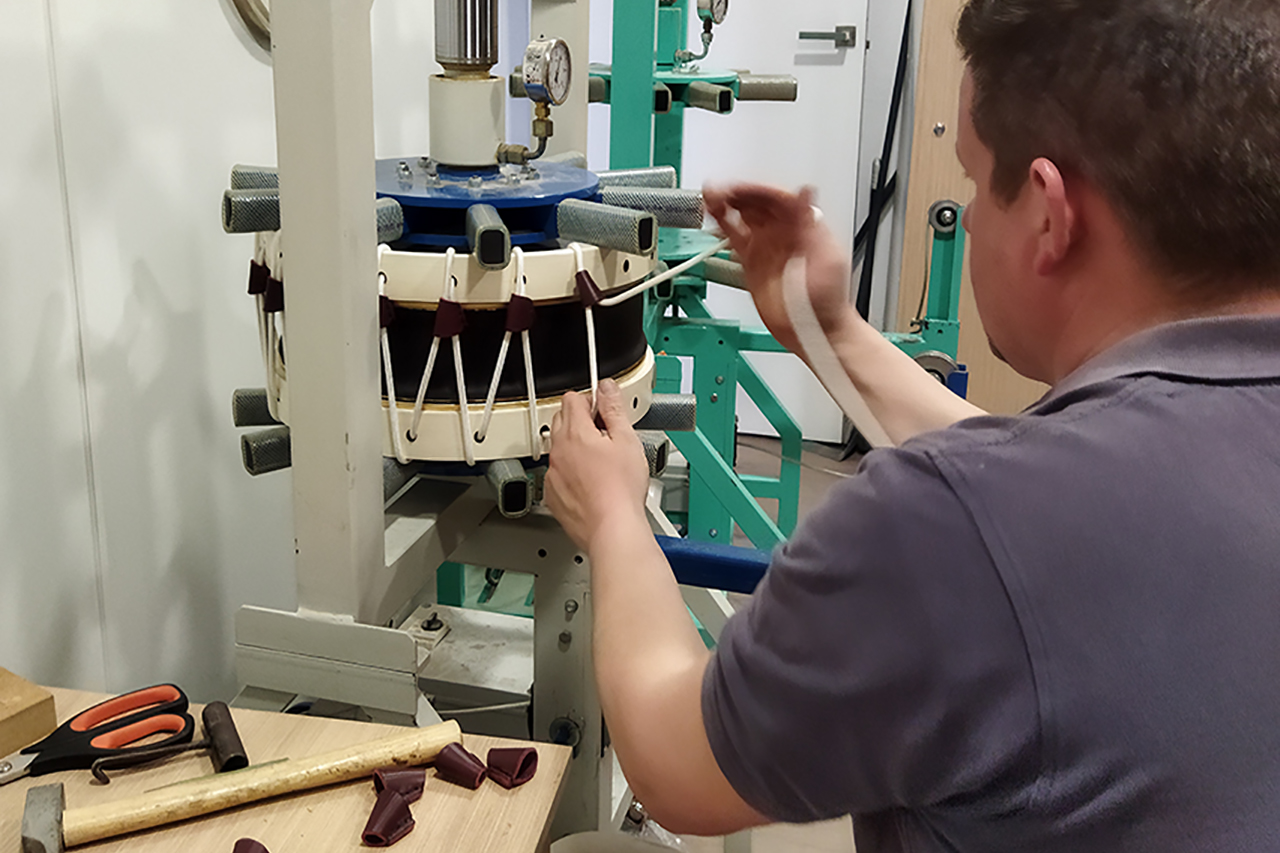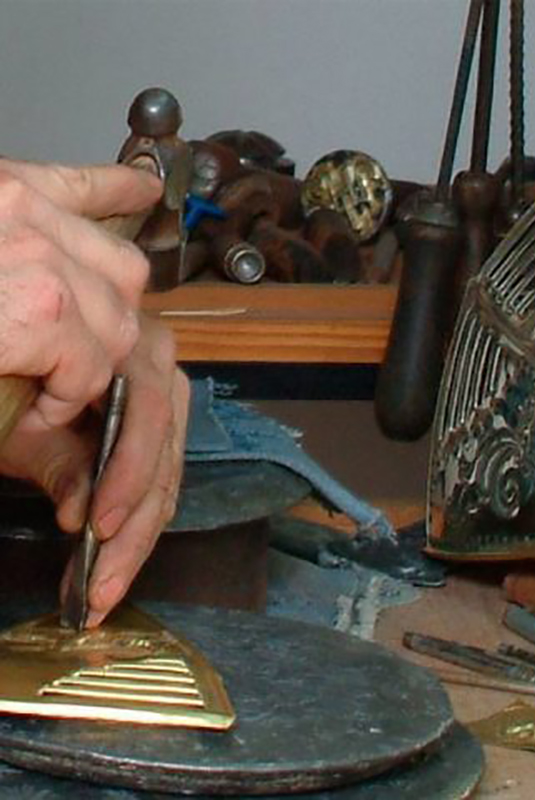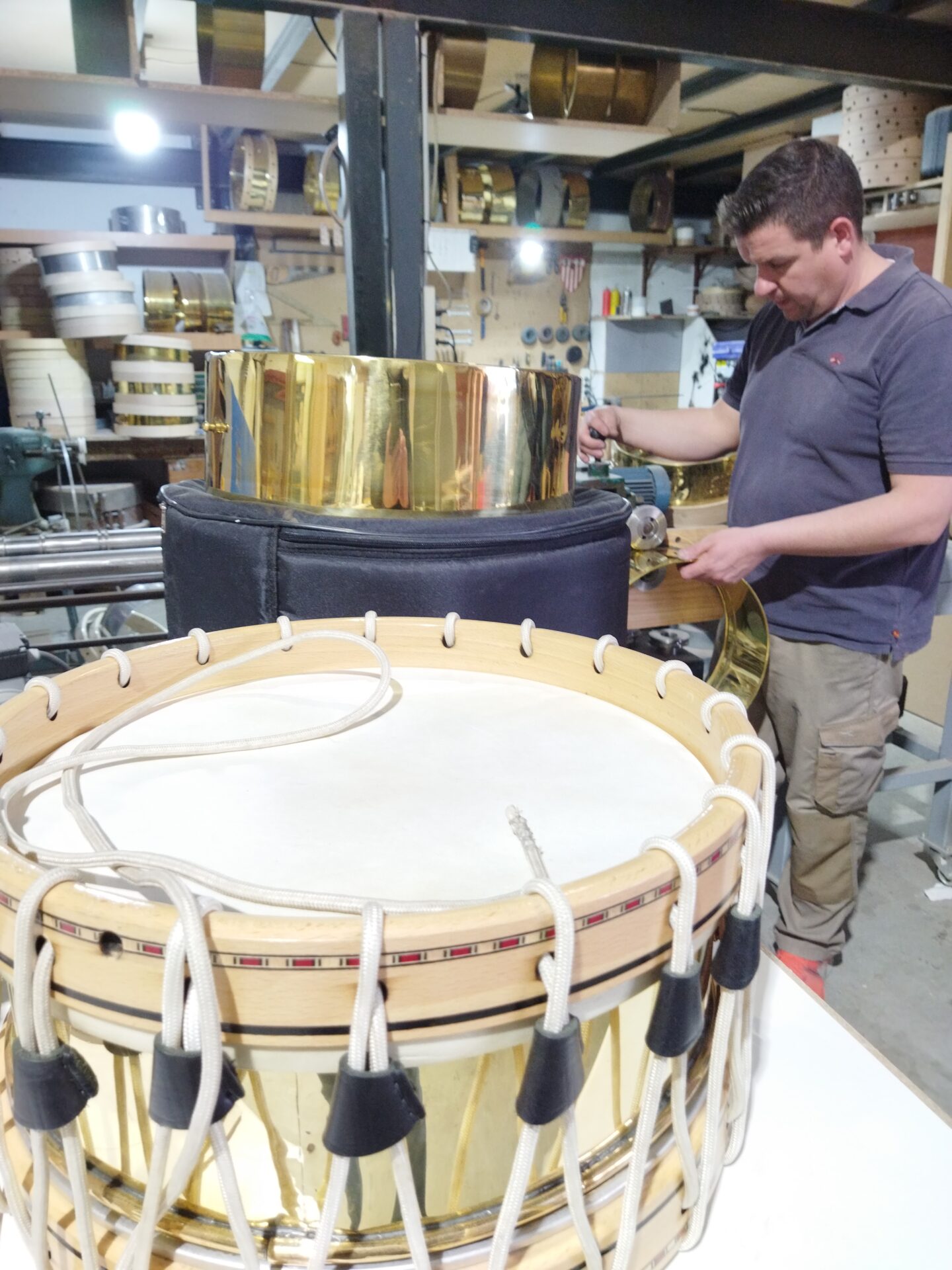
Baenense crafts are directly related to the Holy Week celebrations, in a special way with the drum and the clothing of the Jew.
From metalwork to handcrafted drum construction
PASSIONATE CELEBRATIONS KEEP THE CRAFTSMANSHIP
Holy Week, in its baroque essence, is a faithful recreation of the most significant moments of the Passion, Death and Resurrection of Christ. For this reason, the most diverse elements of crafts are part of what could be considered as exceptional props for the representation in the streets of the city of a unique tradition.
A young generation of artisans ensures the survival of ancient trades
One of the most representative symbols of local traditions is the drum , a percussion instrument that is still made in Baena by hand. In this way, once its different components are ready, it is prepared or “tightened” by pulling a rope that surrounds it in a zigzag and that makes two rings of armeso wood tighten two skins (“skins”) placed in the top and bottom of a gilt brass cylinder called the bottom. This, together with the “squeakers”, which are strings made of pig gut, will give it the peculiar sound that characterizes it.
For its part, metalwork in Baena remains almost exclusively at the service of brotherhoods and brotherhoods. The realization of the most demanded objects, including Jewish helmets, allow the craftsman to put ancestral decorative techniques into practice . The metal work for Holy Week in Baena is so sublime that it could well be considered the creation of a goldsmith.
Finally, the textile craft ranges from the exuberant jackets of the Jews to the delicate cloaks and skirts of the images of the Virgin, passing through the pristine “little white suits” (one of the most characteristic uniforms of the Baenenses brotherhoods) and the numerous embroideries In banners, pennants and brotherhood insignia, textile crafts continue to be maintained in the town as an integral part of the Holy Week traditions.




